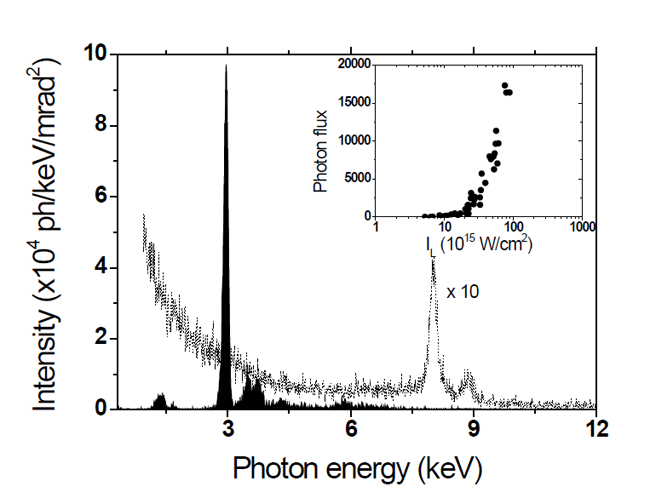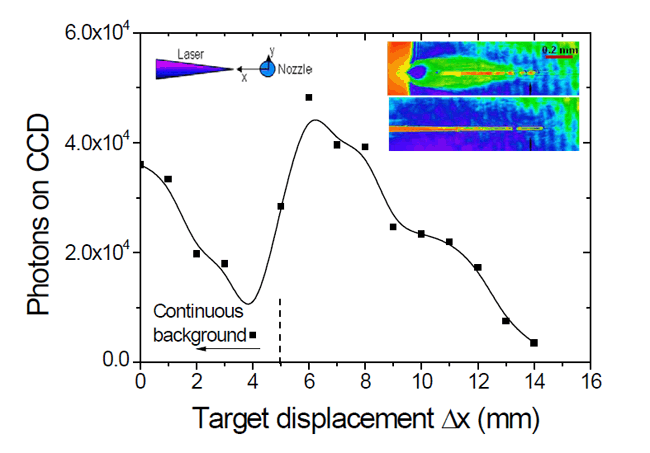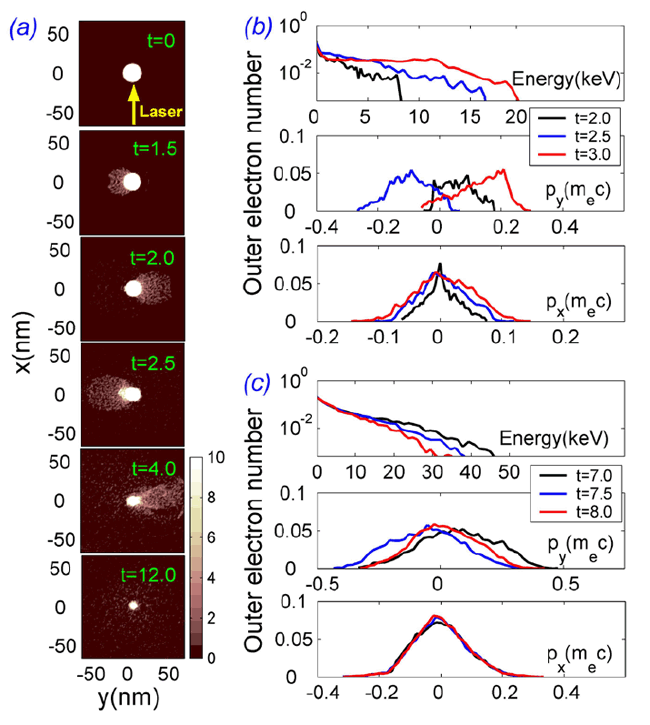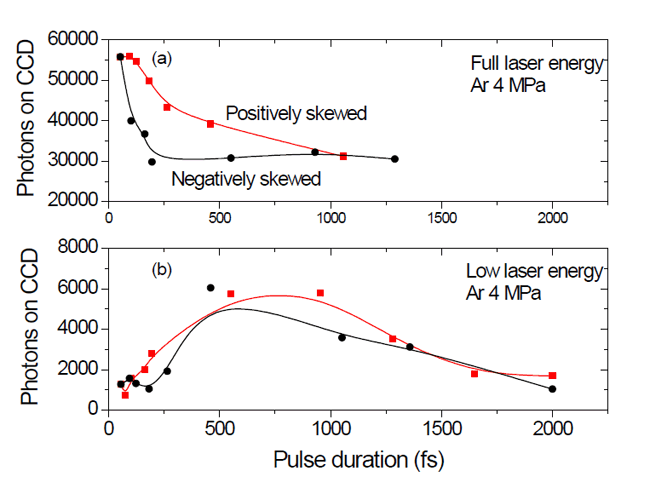New progress of high field physics:High contrast femtosecond laser-driven intense ultrashort x-ray source
Synchrotron light sources have proven very useful for a wide range of investigations. However, it is limited in application because of its large experimental footprint, relatively long pulse structure and polychromaticity. Hard x-ray emission from femtosecond (fs) laser produced plasmas has been extensively studied in the past years. Such hard x-ray sources have a number of interesting applications in imaging. This kind of intense and ultrafast hard x-ray source can pose as a possible alternative to the synchrotron radiation due to its compactness, its sub-picosecond pulse duration and its monochromaticity, and is, therefore, of interest for practically using in majority of labs and hospitals.
Presently, there are serious obstacles limiting laser-driven hard x-ray sources in imaging applications, e.g: the limited Kα x-ray conversion efficiency (~10
-5) and the spectrum contrast ratio of Kα to the continuum background. In the worst case, the energetic x-ray tail will greatly reduce the subject contrast of in-line radiography. On the other hand, electron driven by laser quivers many times in plasma before wave-breaking or long-term propagation, results in the picosecond or nanosecond x-ray temporal duration. This source with long duration is not so outstanding in atomic physics or material physics. Therefore, the laser-driven hard x-ray source with more intense flux, higher spectrum contrast ratio and shorter pulse duration is crucial for imaging application.
New and important progress about laser-driven hard x-ray source is achieved recently by Professor Liming Chen and his colleagues in laboratory of Optical Physics and Institue of Physics, Chinese Academy of Physics. This work is based on their previous progress about the low background, high conversion efficiency Ka source produced by high contrast laser incident into solid target [Physical Review Letters 100, 045004(2008)]. By using small size clusters irradiated by ultra-high contrast laser, they obtained more intense, much higher contrast K-shell x-ray source. it is also one order enhancement of x-ray flux comparing to their previous experimental observation [Applied Physics Letters 90, 211501(2007)]. The intensity of the Ar x-ray emission has been measured to be 1.1 x 10
4 photons/mrad
2/pulse, which is strong enough for a phase contrast x-ray imaging in a single laser shot using an imaging plate 20 cm away from the source. Nonlinear resonant heating is believed to be the dominant mechanism in the case of high contrast fs laser interacting with nm-size clusters; here in this regime, electrons are efficiently driven in a 10 fs time scale, producing enhanced x-ray emission with duration about three orders shorter than that of typical pulses produced by synchrotron sources. Together with the measured source size of 20 µm, the peak brightness of the radiation is estimated to be ~2 x 10
21 photons/s/mm
2/mrad
2, which is comparable to the peak brightness of the third generation synchrotron radiation sources. This ultra-intense, monochromatic and fs hard x-ray source opens the window for “single-shot” laser-driven x-ray ultrafast applications.。
This result has been published in Physical Review Letters 10
4, 215004(2010). This work was supported by the NSFC (Grant No. 60878014, 10974249, 10735050, 10925421 and 10734130), National Basic Research Program of China (973 Program) (Grant No. 2007CB815102) and the National High-Tech 863 program.
 |
| Fig. 1: X-ray spectrum from laser-driven clusters |
 |
| Fig. 2: X-ray source optimization |
 |
| Fig. 3: the nonlinear resonant procedure of the irradiated cluster |
 |
| Fig. 4: demonstration of the transfer from nonlinear resonant to linear resonant |





